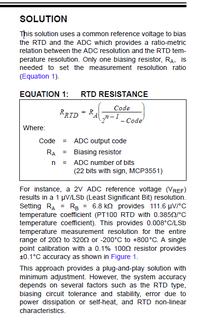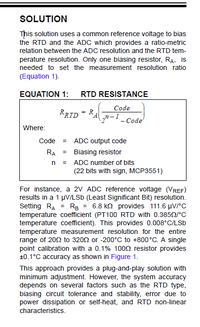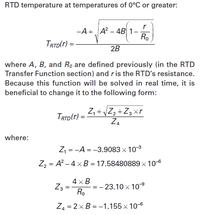Hello.
Regarding the application AN1154 I would like to use Microchip Ratiometric measurement of PT100 temperature using the MCP3551 transducer.
I read the description from this documentation and I can not understand from where and how the resolution and measurement accuracy were calculated and the resistance measurement itself. Therefore, I do not know how to write a temperature calculation program, based on reading from ADC.
So please, explain this passage in particular:

As far as I know the 1 µ V resolution, I do not know why Ra and Rb are 6.8 k Ω and from where value 111.6 μ V / ° C and value 0.008 ° C / LSb ...
The author of the application probably uses some simple patterns and rounding, so please help in deciphering all these calculations.
Regarding the application AN1154 I would like to use Microchip Ratiometric measurement of PT100 temperature using the MCP3551 transducer.
I read the description from this documentation and I can not understand from where and how the resolution and measurement accuracy were calculated and the resistance measurement itself. Therefore, I do not know how to write a temperature calculation program, based on reading from ADC.
So please, explain this passage in particular:

As far as I know the 1 µ V resolution, I do not know why Ra and Rb are 6.8 k Ω and from where value 111.6 μ V / ° C and value 0.008 ° C / LSb ...
The author of the application probably uses some simple patterns and rounding, so please help in deciphering all these calculations.





